|
| From http://www.berkeleyside.com/2017/10/24/worlds-largest-winery-winehaven/
By Frances DinkelspielOct. 24, 2017, 12:30 p.m.
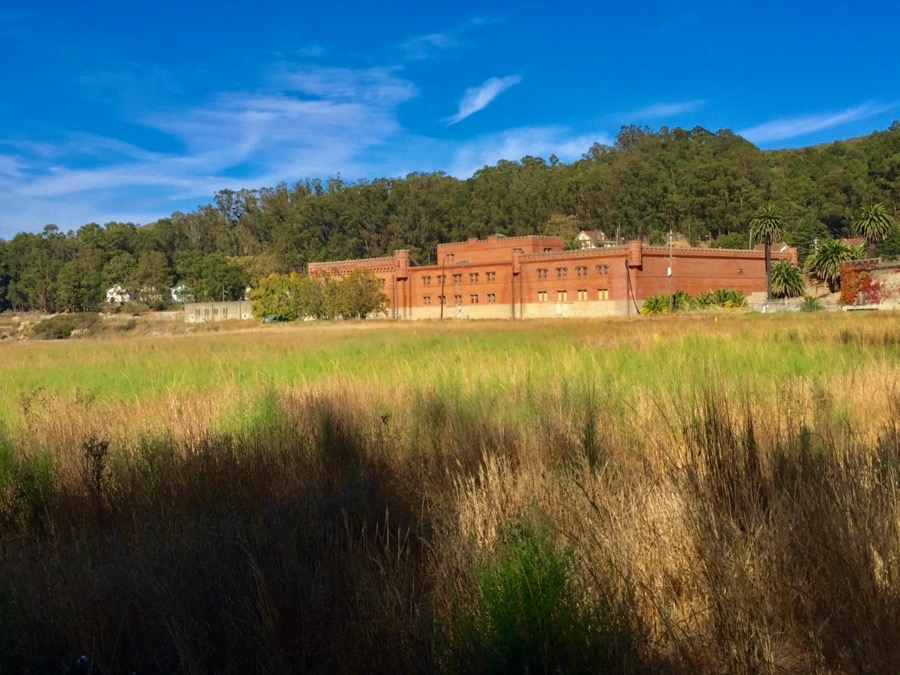
In its heyday, this was the main wine making building at Winehaven. Photo: Frances Dinkelspiel
About 100 years ago, the world’s largest winery wasn’t in Napa or Sonoma counties. It was in the East Bay, on a promontory known as Point Molate, near Richmond.
The California Wine Association, which controlled 80% of the wine production in the state, ran Winehaven from that spot. Constructed after the 1906 San Francisco earthquake and fire, the winery had a crenelated red brick building with turrets that resembled a medieval castle. More than 400 workers made about 12 million gallons of wine at Winehaven each year and loaded it directly onto ships and railroad cars to be sent around the world.
All that ended by 1919, as the Prohibition era started.
But now, in what Richmond Mayor Tom Butt calls a “symbolic” development, wine has returned to Winehaven, located near the eastern edge of the Richmond-San Rafael Bridge. Lou Bock, a vintner and distributor of wines and spirits, moved his warehouse from the port of San Francisco to Winehaven about two months ago.
Bock has rented two bays in what was formerly the main winemaking space in the iconic “castle” building. The shelves of wine and liquor take up just a small fraction of the complex’s hundreds of thousands of square feet of space spread over 35 buildings. But for history lovers and people anxious that Winehaven is slowly decaying by the edge of the bay while Richmond litigates a suit brought by a former developer from Berkeley, it is good news.
“I’m really excited about it,” said Butt. “In the best of all worlds, in my dreams, I can’t imagine anything better than to bring some kind of wine-related operation to Winehaven. I think, even though it is symbolic, it’s really important because it gets a foot in the door, it sets a precedent that there is some kind of role for wine to play in Winehaven.”
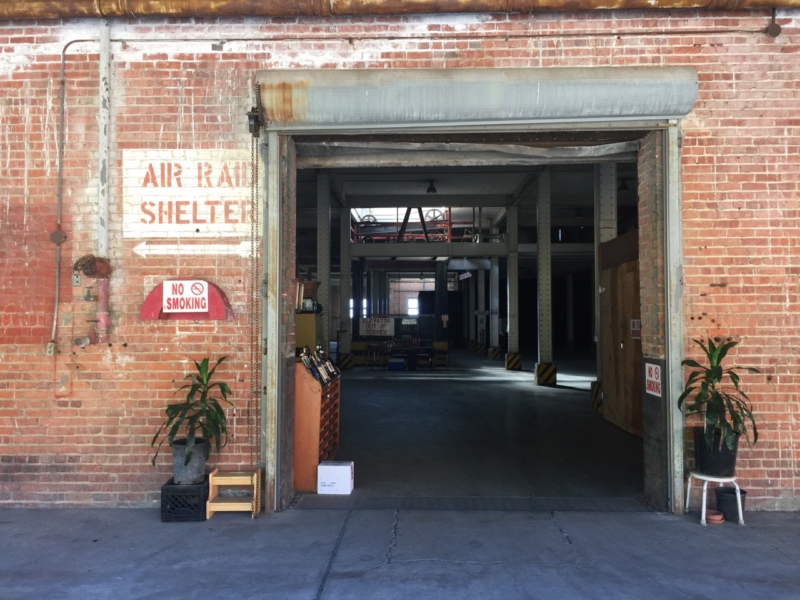
The entrance at Winehaven where Lou Bock has his wine and spirits storage facility. Photo: Frances Dinkelspiel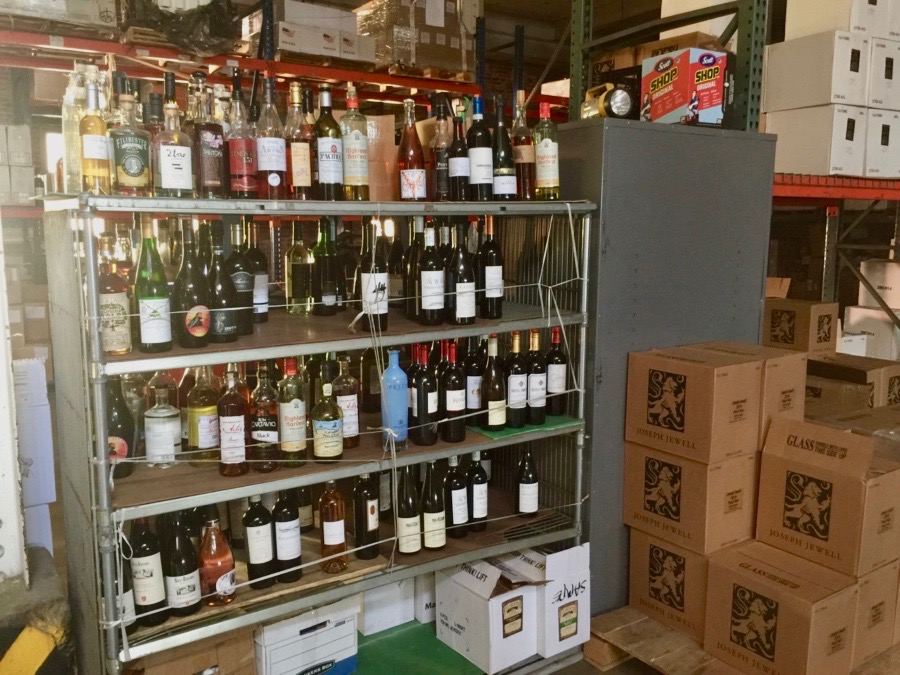
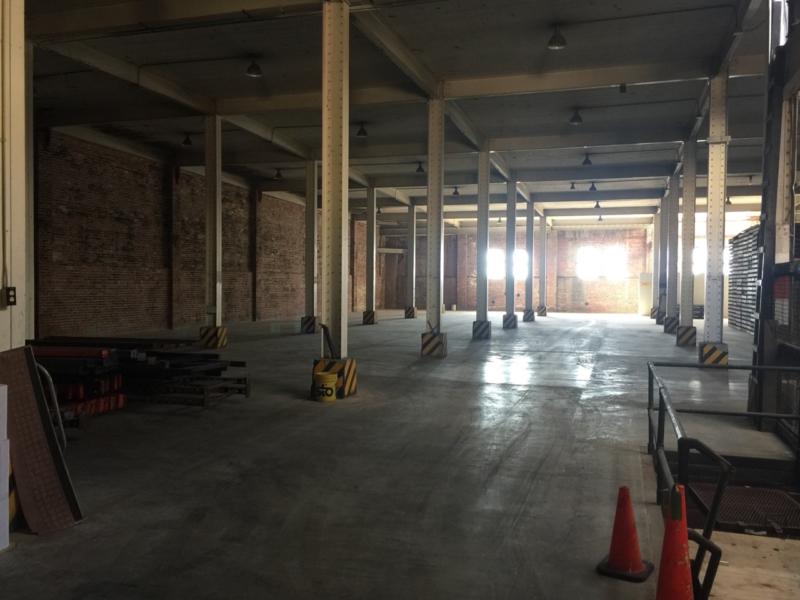
Some of the wine stored at Winehaven and the vastness of just one floor of Winehaven. Photos: Frances Dinkelspiel
Bock first got interested in wine in the 1970s when he worked for the Monterey Bay Wine Company. He eventually bought some land in Redwood Valley outside Ukiah and planted Sauvignon Blanc, Sangiovese, and Viognier grapes, which he makes into wine for his label, Chance Creek. Bock in the 1980s opened up Bock Wines & Spirits at Pier 26 in San Francisco. Bock Wines distributes wine and alcohol around the state. Its motto is “Eclectic wines for curious minds.”
When the company’s rent on the San Francisco waterfront doubled, Bock began to look for a new space. He connected with Bobby Winston, the proprietor of Bay Crossings, a monthly magazine that focuses on various aspects of San Francisco Bay. Winston loves the history of Winehaven and has worked with Butt and others to try to repurpose the property. While the lawsuit between Richmond and Upstream Point Molate, the development company that wanted to convert Winehaven into an Indian casino, makes its way through the courts, Winston obtained a three-year lease with the city to rent out some of the bays in Winehaven.
“It’s a lovely space,” said Bock. “It’s the right temperature here by the water for wine storage. It’s about 65 degrees.”
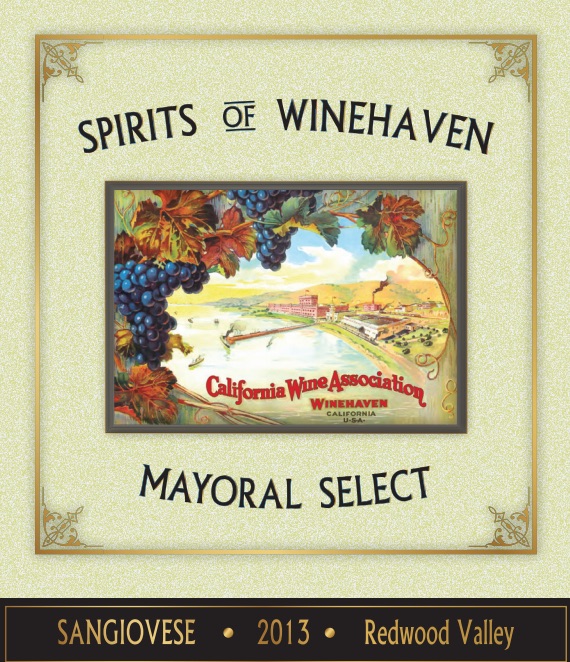
The building has no running water, toilets or electricity, so its best use at this time is for something like storage. (Heyday, the Berkeley-based publisher, stores its inventory at Winehaven, too.) Bock has set up a portable trailer with modern amenities nearby as his company’s office.
Now that he has been there a few months, it appears as if Bock, like Butt and Winston, has become enamored with Winehaven’s history. He has created Winehaven-themed labels on the wines he makes in Mendocino County. They are dubbed “Mayoral Select,” because they will be used for a party to kick off Butt’s re-election campaign.
History of Winehaven
Before the San Francisco earthquake, the center of the California wine industry was in San Francisco where the cool weather and rolling summer fogs made it an ideal place to store and make wine. In those days, the California Wine Association controlled about 65% of the wine business in the state, a percentage that increased to 80% by Prohibition. The company was formed in 1894 when seven wine merchants merged their companies with the aim of stabilizing wine prices, which were spiraling down. The California Wine Association became a monopoly by undercutting its prices across the country and declaring a “wine war” against its competitors. After it weakened its opponents, the CWA swooped in and purchased them. The company eventually controlled vineyards and wineries around the state.
The CWA set up its headquarters in the old Kohler & Frohling building on Second and Folsom streets in San Francisco. It also had many other buildings in the city, most of which were destroyed by the earthquake and fire.
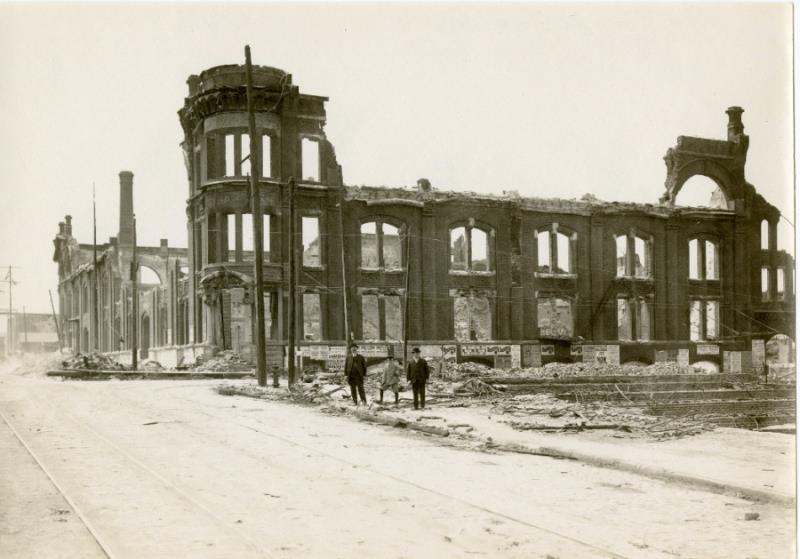
The headquarters of the California Wine Association after the 1906 earthquake and fire in San Francisco. Photo: California Historical Society
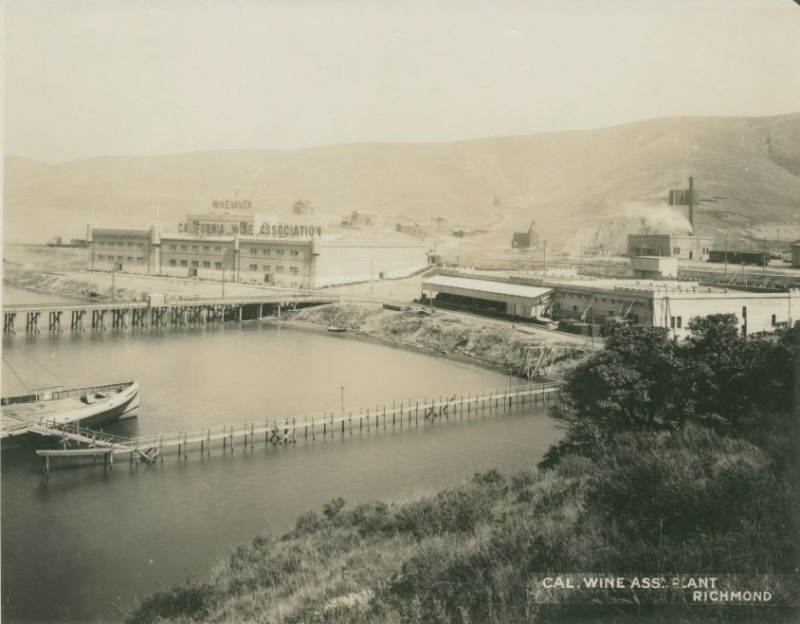
Winehaven in the early part of the 20th century when it was the world’s largest winery.
Winehaven was fully operational around 1908. It was like a city-state: hundreds of its workers lived in cottages on the property or at the Winehaven Hotel. Some wine workers immigrated directly from Italy to work there. There was a school for workers’ children, rail lines linked directly to Napa and Sonoma counties, and a 1,800-foot-long pier ran a third of the way into San Pablo Bay to accommodate enormous ships. The main winery could hold 10 million gallons of wine. There were bottling shops, cooperages, a sherry house and a lab.
After Prohibition forced it to close, Winehaven sat mostly vacant until June 1942, when the U.S. Navy seized the property and converted it into a fuel depot. The Navy used many of Winehaven’s buildings but also constructed 20 2.2-million-gallon concrete fuel tanks to hold aviation and bunker fuel for the Pacific Fleet. Pipes that fed the fuel onto ships still sit on one of the piers extending into the Bay. The Navy decommissioned the property in 1995 and turned it over to Richmond in 2003. The Navy paid to clean up the contamination it left behind.
Since then, the city has explored numerous ways to convert the property, but none have come to fruition. The result is a kind of ghost town with most of the property’s 35+ buildings slowly decaying, their windows and doors shuttered. Some of the brick turrets have cracked and are propped up with metal poles. The bomb shelter the Navy constructed is still there, almost intact. Some former occupants stacked old Navy pallets in one corner of the main building to make a handball court. Pieces of old wood furniture remain.
At one point it looked like the Berkeley developer, Jim Levine and his company Upstream Point Molate, would successfully partner with the Guidiville Band of Pomo Indians to build a casino and 500-room Marriott Hotel in exchange for paying Richmond $12 million a year. That plan crumbled when voters in 2010 rejected an advisory measure of support for the casino and elected a progressive majority to the City Council who opposed the development. Levine is suing Richmond for breach of contract and until the suit is resolved nothing much will happen with Winehaven, said Butt.
But, in the meantime, wine has returned to Winehaven.
Nosh Weekly is a free weekly email that will keep you bang up-to-date on all the delicious food, drink and restaurant news in the East Bay. Sign up here.
Frances Dinkelspiel
Author, Tangled Vines: Greed, Murder, Obsession and an Arsonist in the Vineyards of California
A New York Times bestseller
Author, Towers of Gold: How One Jewish Immigrant Named Isaias Hellman Created California, a 2008 San Francisco Chronicle bestseller
Co-founder Berkeleyside, winner of the SPJ "Best Community News Site," two years running
510-984-2366
FrancesDinkelspiel.com
Twitter: @Frannydink
|

